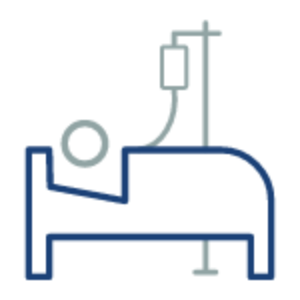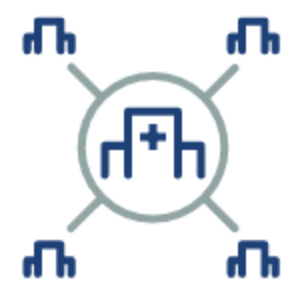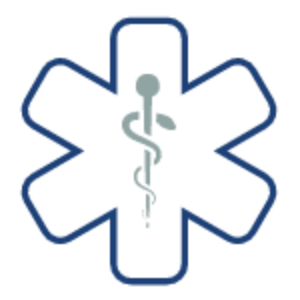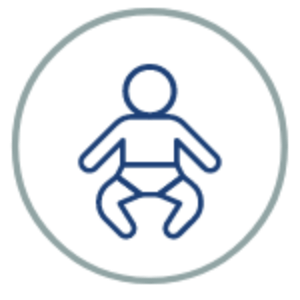Advancing Patient Care
What Starts Here Advances Patient Care
How academic medicine advances patient care
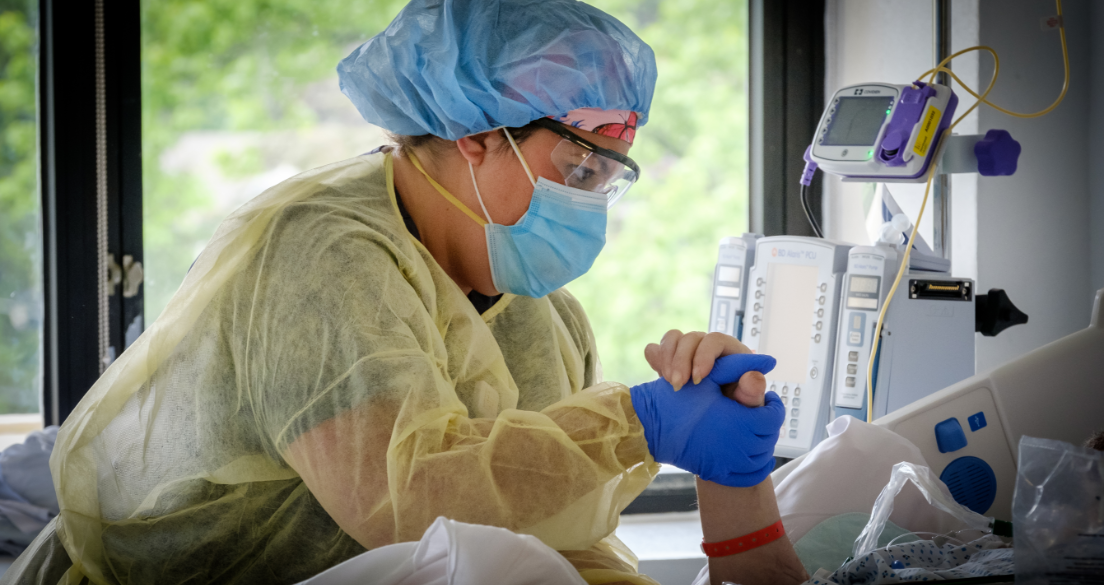
Credit: Northwell Health
The COVID-19 pandemic demonstrated academic medicine’s potential to save lives. No other health care system was able to match the infrastructure, specialties and expertise necessary to handle complex patient care issues during this critical time. And, in general, patients treated at major teaching hospitals have up to 20% higher odds of survival for all conditions.
Key Takeaways:
- Building off existing research on mRNA vaccines and the coronavirus, academic medicine researchers supported development of the Moderna and Pfizer vaccines.
- Innovative medical practices used during the pandemic, like protocols around ventilator use and turning COVID patients to a prone position, were initiated at academic medical centers.
- In a shift driven by the pandemic and academic medicine, telemedicine now accounts for 13%-17% of all visits.
- Academic medicine researchers are exploring the new frontier of patient care and clinical research, such as digital tools like wearables and smartphones and disseminating these advances to community hospital settings.
- Academic medicine covers more patients than any other direct care system, with 160 medical schools and nearly 500 academic health systems and teaching hospitals nationwide.
At the heart of academic medicine are patients—and the health professionals serving them.
They’re the at-risk pregnant woman who gets a house call from an obstetrician in her rural community. The preemie thriving in a NICU under the watchful eyes of a dedicated team. The homeless man receiving diabetes medication and counseling at a downtown clinic. The teenager grappling with substance use and addiction, and the mental health professionals supporting her. The fire victim who is rushed to the nearest burn center. The grandmother who wakes up with weakness and receives immediate intervention at an academic stroke center.
What happens every day, in 160 medical schools and nearly 500 academic health systems and teaching hospitals across the U.S., comes down to one core principle: the delivery of high-quality patient care, rooted in the latest research, practices and technology — by people, for people. What they do doesn’t stop at their doors. Academic medicine carries it forward so future generations can thrive. They do this by educating the next health care provider and by bringing technological advances and cutting-edge care to community hospital settings.
Lessons learned from COVID-19
In addition to providing high-quality patient care, academic medical centers are uniquely positioned to advance patient care in times of crisis. Academic medicine thrives in this space, as it served, treated and saved the lives of so many during the COVID-19 pandemic.
“When there’s a public health emergency, who does everyone turn to? It’s the academic medical centers,” says Rosha McCoy, MD, senior director of advancing clinical leadership and quality at the Association of American Medical Colleges (AAMC). “They already have the infrastructure, specialties, and expertise. They’re the ones who are stepping up to the plate.”
At Emory Healthcare in Atlanta, the staff already had best-in-class systems in place that supported team-based approaches to care. As the pandemic accelerated, these systems allowed a nimbler response—one that saved many lives across the 11 hospitals in Emory Healthcare.
“It’s really about trying to make sure that our people have everything they need on the front lines to take care of our patients,” says Gregory J. Esper MD, MBA, associate chief medical officer at Emory Healthcare.
Having the strongest possible response in place allowed innovation to flourish. Teams at Emory contributed to the development of the Moderna vaccine as well as molnupiravir, an oral drug that treats COVID, and the development of patient care guidelines for critically ill patients.
UW Medical Center (UWMC) in Seattle, Washington, the first health system in the U.S. to report cases of COVID-19, was an early pioneer of the COVID PCR test and created the Institute for Health Metrics and Evaluation, which developed models that track COVID mortality rates, according to Christopher Kim, MD, UWMC’s associate medical director for quality and clinical efficiency.
Another lesson learned: the huge need for greater equity in patient care. The pandemic exposed disparities in critical care outcomes among the most vulnerable populations, and has renewed focus on access to health care. “Without question, it was the greatest learning that could come out of such a disaster,” Dr. Esper says.
“Patient care in academic medical centers doesn’t sit separately from research and education and community collaboration.
It’s all interwoven.”
Rosha McCoy, senior director of advancing clinical leadership and quality at the Association of American Medical Colleges (AAMC)
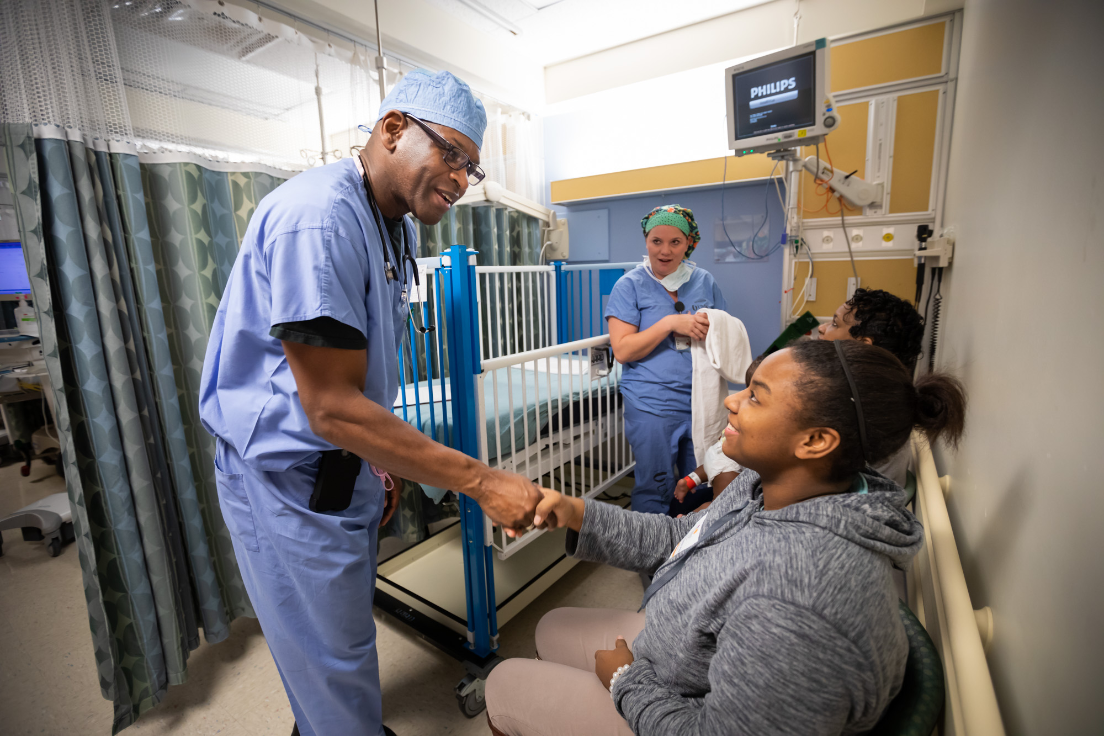
Credit: University of Mississippi School of Medicine
Where patient care flourishes
Beyond superlative care in times of crisis, what makes patient care unique at academic medical centers? First, the full spectrum of health is addressed, starting with primary care, which means routine and preventative medicine, mental health, and social support. It also encompasses highly specialized critical and complex care — AAMC member teaching hospitals include 59% of level-one trauma centers, 64% of all pediatric intensive care beds, and 100% of all NCI-designated comprehensive cancer centers.
Academic medical centers also often serve as regional hubs, drawing patients from surrounding states. For instance, patients come to UW Medicine in Seattle from Alaska, Idaho, Montana, and Wyoming. “They come because this is the place where they can get high-quality specialized academic medicine care such as transplants, advanced cardiac care and advanced cancer care,” says Dr. Kim.
But the key difference lies in academic medicine’s approach.
“Patient care in academic medical centers doesn’t sit separately from research and education and community collaboration,” says AAMC’s McCoy. “It’s all interwoven.”
Helping the most vulnerable
Academic medicine also provides a critical safety net for uninsured and
at-risk populations, often in the communities just outside their walls.
“Academic medical centers are committed to populations of patients that maybe others aren’t willing or able to serve. And yet they build programs that provide the highest level of care,” says McCoy.
This plays out across communities in smart, patient-centered programs that respond to stubborn local challenges and address inequities in care.
One such program, the MOTHeRS Project, at East Carolina University School of Medicine (ECU Health) in Greenville, NC, aims to reduce obstetrical emergencies and deaths among pregnant women who live in rural areas, far away from medical centers. (The risks are disproportionately high for Black women, who represented nearly 70% of maternal deaths in the region over a nine-year period.)
The program trains health professionals in birth-related crises and routinely visits high-risk patients in person; it also screens for food insecurity and provides mental health care. The region has seen a 24% drop in the infant mortality rate.
Safety net care programs like these often grow out of partnerships with academic medicine’s over 150 accredited medical schools. Many students at Boston University School of Medicine, for example, rotate through Boston Health Care for the Homeless Program (BHCHP), coming away with a better understanding of the determinants that drive homelessness. It’s an eye-opening, real-world experience that fosters empathy, understanding and ultimately change.
“The next generation of doctors and healthcare professionals is working in partnership with these communities,” says McCoy. “That’s what’s different about academic medicine.”
Centering research in patient care
Another differentiator: Academic medicine brings researchers, clinicians and patients together into the same space. Patients, by enrolling in clinical trials at academic medical centers or simply by being treated, fuel discoveries, which are then shared widely.
This interplay of patient care and research occurs across the country and an example is the foundation of VCU School of Medicine’s new Stravitz-Sanyal Institute for Liver Disease and Metabolic Health in Richmond, Virginia. About 1 in 10 Americans have some type of liver disease, and in 2021 about three people died per day on the liver transplant waiting list.
According to director Arun Sanyal, M.D., the institute will bring together clinical care and patient-oriented research with the hope of reducing the need for liver transplants. A robust biobank that integrates clinical, laboratory, imaging and genetic data with longitudinal outcomes data will be coupled with clinical research facilities to support the development of new tests and treatments.
“Everything we do starts and ends with our patients,” says Dr. Sanyal. “By including them every step along the way, we can tackle real-life problems over the entire course of liver disease with the goal of improving health for us and for future generations.”
“Everything we do starts and ends with our patients. By including them every step along the way, we can tackle real-life problems…with the goal of improving health for us and for future generations.”
Arun Sanyal, M.D., director, VCU School of Medicine’s Stravitz-Sanyal Institute for Liver Disease and Metabolic Health
Looking to the future
Academic medicine researchers are constantly exploring new frontiers in patient care and clinical research. That includes digital tools patients use every day, like wearables and smartphones. For example, researchers are looking at whether smartphones can track real-time assessments of asthma and whether wearables can consistently record a patient’s heartbeat, making sure it remains regular over periods of time.
And in many ways, the future lies in the next generation of health care professionals, who will be providing patient care in ways still unimaginable. Rooting their clinical education in a mission that centers patient care for all is critical.
“We take pride in not only providing them with educational and clinical care, but also showing them how to be a community leader — someone who wants to make the world a better place,” says UWMC’s Dr. Kim. “That’s what’s coming out of academic medicine.”

